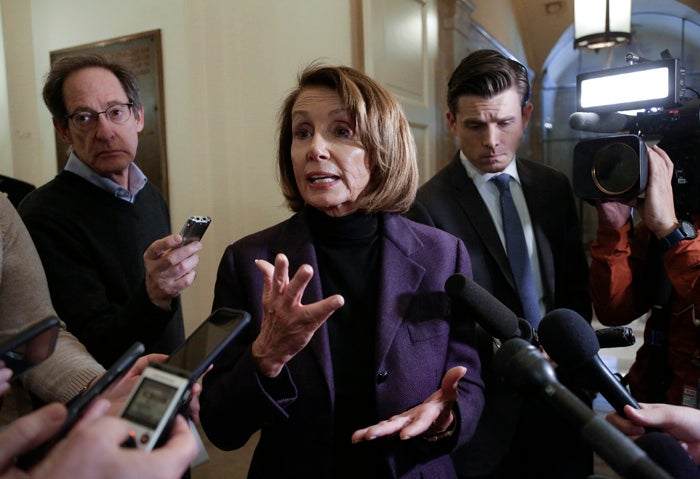Byron York: Congress, not House alone, stands as co-equal branch
Published 7:17 pm Wednesday, January 23, 2019

- Nancy Pelosi led the House to twice impeach President Trump and is determined to hold him accountable for his actions on Jan. 6 (Field Photo by J. Scott Applewhite/Associated Press)
By Byron York
The divided government of 2019 is a mirror image of the divided government of 2011. Back then, Democrats controlled the White House and Senate, while Republicans had recently taken control of the House with a big victory in the 2010 midterms. Today, Republicans control the White House and Senate, while Democrats have recently taken control of the House with a big victory in the 2018 midterms.
It’s the same situation, essentially. But today there is a vastly different public conversation about the balance of power in government. These days, we are often reminded that Congress is a co-equal branch of government, and therefore Speaker Nancy Pelosi stands on an even level with President Trump. Back in 2011, when the two players were Speaker John Boehner and President Barack Obama, there wasn’t as much of that kind of talk.
A comparison, from the Nexis database of newspapers, magazines, websites and television transcripts: From Election Day 2010 until Jan. 20, 2011, there were 18 mentions of “Boehner” and “co-equal.” From Election Day 2018 until Jan. 20, 2019, there were 683 mentions of “Pelosi” and “co-equal.”
Democrats have been saying it every day, starting with Pelosi the morning after the election. Congress’ role is “not to be a rubber stamp, but a co-equal branch,” she said, adding that she and her colleagues had a “responsibility for oversight as an independent, co-equal branch.”
Pelosi said much the same many more times by Jan. 3, when she officially won the speaker’s gavel. In her first speech on the House floor, she said, “The legislative branch is Article I: the first branch of government, co-equal to the president and judiciary.”
Virtually every other House Democrat said it, too. There was even talk to the effect that Pelosi is now equal to the president. The chief advocate: Pelosi herself. “Asked if she considers herself Mr. Trump’s equal, she replied, ‘The Constitution does,’” The New York Times reported in an article about the speaker.
A Jan. 17 discussion on CNN focused on the speaker’s battle with the president over the shutdown and State of the Union address. Republican Rep. Michael Turner said of Pelosi, “She needs to come to some recognition that she’s not equal to the president of the United States.”
Susan Hennessey, a Brookings Institution scholar, CNN analyst and editor of the blog Lawfare, blanched. “Pretty wild to hear a member of Congress forcefully argue that congressional leaders are constitutionally inferior to the president,” Hennessey tweeted. “James Madison weeps.”
But the speaker of the House is not, in fact, equal to the president of the United States. Congress, not the House, is a co-equal branch of government. Actually, more than equal — it is, as Pelosi noted, the first branch of government. But to exert its will, Congress must be united. To overrule the president Congress must be united.
Pelosi controls just half of Congress. To overrule a presidential veto, she needs 287 members to agree with her. And then the Senate, controlled by Republicans under Majority Leader Mitch McConnell, has to go along. The system simply was not designed for a head-to-head equal competition — the president versus the speaker. It doesn’t work that way.
Byron York is chief political correspondent for The Washington Examiner.

